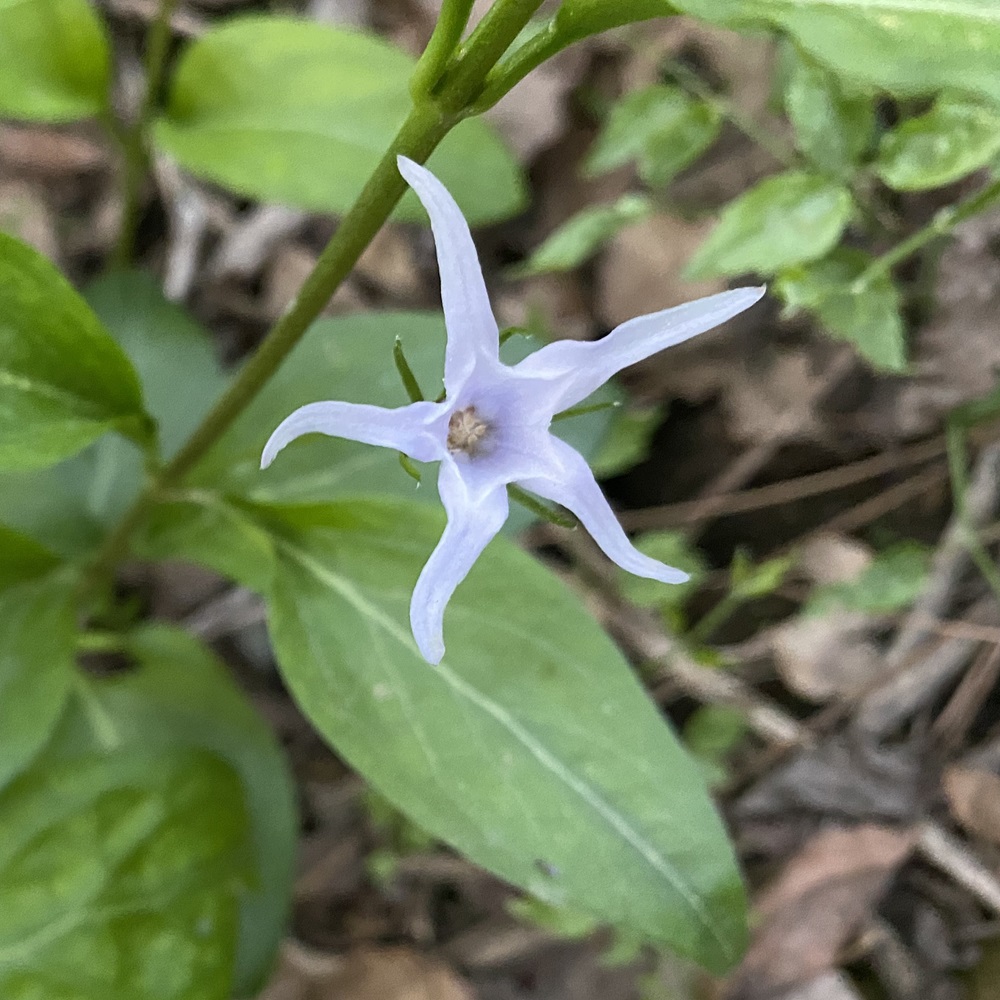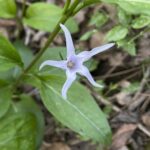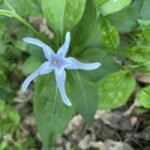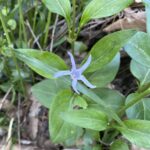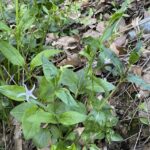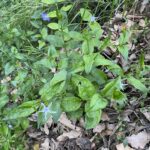Βίνκα η μείζονα ποικιλία η οξύλοβη
Etymology of Vinca major variety oxyloba
The name of the genus, "Vinca", is short for the ancient name given by Pliny, "Vincapervinca", known also as "Vinca pervinca"; it derives from the verbs "vinco", meaning "conquer" and "pervinco", meaning "conquer completely", referring to the extend of its growth, as it is spreading indefinitely on countless square metres. The epithet "major" refers to the larger size of the species in relation to the similar Vinca minor. "Oxyloba" is Greek from "οξύλοβη" (oxylovi or oxylobi) which means "acute lobe", referring to the shape of its flower lobes.
The Vinca genus in Cyprus
One Vinca species/kind has so far been identified in the wild Cypriot habitat. It is generally considered an introduced species rather than a native one. In Cyprus, it behaves like a naturalized plant, spreading locally through its trailing stems but not becoming aggressively invasive. Botanical references like Meikle’s Flora of Cyprus document the general species Vinca major on the island, particularly in areas influenced by past human cultivation, but do not note it as a native or widespread wild plant.
As for Vinca major variety oxyloba, most detailed floristic surveys of the island recognize only the typical form of Vinca major, without distinguishing the oxyloba variety. This suggests that oxyloba is either extremely rare or not formally identified in the wild. The specimens in the pictures were recorded in April 2025, over the corner of shaded stream in the village of Mandria, Lemesos district, at altitude of approximately 800 meters.
The habitat of Vinca major variety oxyloba
Vinca major var. oxyloba typically grows in lightly shaded or semi-shaded habitats such as woodland margins, hedgerows, rocky slopes, and disturbed ground. It prefers moist but well-drained soils and is often found in areas with a calcareous (chalky or limestone) substrate. Like the typical form of Vinca major, it thrives in environments where it can spread across the ground via its trailing stems, taking advantage of open soil or partial canopy gaps. Its adaptability to different soil types allows it to persist in both natural and semi-natural habitats, particularly where mild, Mediterranean climates prevail.
Geographically, Vinca major var. oxyloba is mainly native to parts of the Mediterranean Basin, with a particular concentration in southeastern France and northwestern Italy. It is more localized compared to the widespread Vinca major, suggesting it may have developed as a regional form adapted to specific environmental conditions. While the species Vinca major has been introduced and naturalized in many parts of the world, the variety oxyloba remains primarily associated with its native Mediterranean range, where it continues to grow in rocky woodlands and scrublands characterized by mild winters and dry summers.
Vinca major versus V. major var. oxyloba
Vinca major var. oxyloba is primarily distinguished from the typical Vinca major by the shape of its flower lobes. In oxyloba, the lobes of the corolla (the blue or violet flower petals) are noticeably narrower and more pointed compared to the broader, more rounded lobes of regular Vinca major. This gives the flower a slightly sharper, star-like appearance rather than the softer, more open look of the typical form. The name "oxyloba," meaning "sharp-lobed," directly reflects this morphological difference. Aside from the petal shape, the flowers of oxyloba are generally similar in color and size to those of the standard form.
Other aspects of the plant, such as its trailing habit, evergreen leaves, and preference for shaded or semi-shaded habitats, remain largely the same between Vinca major and its variety oxyloba. However, some observers note that the leaves in oxyloba can occasionally appear slightly narrower or more elongated, although this difference is usually subtle and less reliable for identification. Overall, the most consistent and easily observed characteristic separating oxyloba from typical Vinca major is the sharper, narrower shape of the flower lobes.
Differentiation in flowers
The flowers of Vinca major var. oxyloba are generally slightly smaller than those of typical Vinca major, although the difference is often subtle. In Vinca major, the flowers are usually quite broad, with a diameter ranging from about 4 to 5 centimeters, giving them a full, open appearance. The lobes in the typical form are wide and rounded, contributing to the flower’s larger visual impression. In contrast, the flowers of var. oxyloba tend to measure closer to the lower end of that range, and because the petal lobes are narrower and more sharply pointed, the flower overall appears less wide and slightly more delicate.
This difference in lobe shape not only affects the outline of the flower but also its perceived size. Even if the actual petal length in oxyloba is similar to that of regular Vinca major, the narrower lobes create more space between the petals, making the flower look somewhat smaller and less densely filled. Thus, while the size reduction is not extreme, and both forms can overlap in measurements, the combination of narrower lobes and a less rounded corolla gives Vinca major var. oxyloba a noticeably smaller, more star-like flower profile compared to the broad, open-faced flowers of standard Vinca major.
